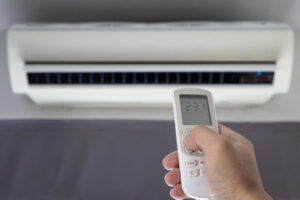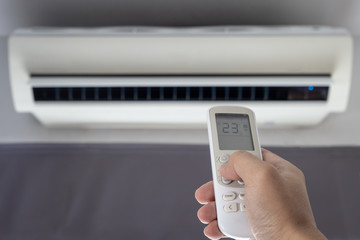Everyone knows that heat rises, but what could be more obvious is why. The answer has to do with air molecules Comfort Pro’s Heat and Air knows how to cover your entire venue’s spaces.

Air molecules in hot air move faster and farther apart than cold air molecules. That makes the air less dense and causes it to float upward. It also explains why warm air can hold more moisture than cold air.
Thermodynamics is a branch of physics that deals with the transfer and transformation of energy. It is also concerned with the physical characteristics of matter. Heat is an example of power. In fact, it was the first form of energy to be formally recognized as such. It was first recorded in 1798 by Count Rumford, who noticed that the amount of heat generated from boring the barrels of his cannons was proportional to the effort he exerted. Thermodynamics is based on the law that states that all forms of energy are conserved, even when converted from one format to another.
A thermodynamic system can be defined as a collection of interrelated atoms or molecules. Energy is transferred between the system and its surroundings through internal energy, friction, and electromagnetic radiation. Thermodynamics is concerned with the conversion of this energy into other forms such as kinetic energy, potential energy and heat energy.
The Zeroth law of thermodynamics states that any two systems in contact will eventually arrive at a state of thermal equilibrium. That is because energy transferred between the systems in the form of heat will dissipate into a higher-energy form, such as kinetic energy or work. The heat that remains will raise the temperature of the system.
In thermodynamics, the various properties of a thermodynamic system are often referred to as its state variables. These include the temperature T, the pressure p and the chemical potentials mi. The latter measures a substance’s ability to do work, and they vary according to the substance’s size and mass. Thermodynamic potentials can be divided into extensive and intensive variables. Intensive variables are independent of the size of the system; examples include temperature, pressure, and specific heat capacity. Extensive variables are dependent on the size of the system and are measured by parameters such as entropy, volume, and molar heat capacity.
In the early 1870s, Josiah Willard Gibbs introduced mathematical methods to the study of thermodynamics. He showed how the various state variables of a thermodynamic system can be graphically analyzed, and he gave a formal definition of internal energy — sometimes referred to as Gibbs energy.
Convection is a form of heat transfer that involves the bulk movement of heated fluid, rather than the microscopic movements between individual molecules involved with conduction. It is also sometimes referred to as advection, since it is mass transfer driven by bulk fluid motion (as opposed to pressure).
As fluid is heated, thermal expansion causes the lower layers to become less dense than the warmer higher layers. This creates buoyancy, causing the hotter less dense part of the fluid to rise and be replaced by the colder, thicker part. This process is a continuous cycle, transferring heat from the lower layers to the upper layers. Convection is a very efficient method of heat transfer, which is why it occurs in nature and is used for heating homes.
A good example of natural convection is when a large body of water is located next to land. The surface of the water absorbs more sunlight than the surrounding land and becomes warmer, resulting in a temperature gradient that is observed by breezes blowing across the water and land.
Heated air is another good example of natural convection. As the Sun heats the Earth, the atmospheric layers above it begin to warm and expand, causing them to become less dense than the air around them. That causes the hot air to rise and be replaced by cooler air, creating a circulation of heated air that generates our weather systems.
Convection is most easily observed in liquids or gases but may occur in some solids under the right conditions. For a visual demonstration of the effects, a glass of water with red food dye can be placed inside a tank of cold water and watched as the red convection currents rise, cool, and settle.
The flow of the convection currents transports dissolved molecules in the fluid so that a mixture of concentrated and dilute chemical species is present. In addition, the convection movement can transport ions and other particles in the solution. The combination of this transport and the advective heat transfer makes convection the most important mode of thermal energy transport in most natural and industrial processes.
Radiation involves the transfer of energy via electromagnetic waves. The most familiar example is the heat from the Sun or a light bulb that is transferred by radiation to the objects they touch. All matter with a temperature greater than absolute zero emits thermal radiation and travels at the speed of light through space. This form of energy transfer is called radiative because it does not involve contact between the source and the heated object as do conduction and convection.
The rate of radiative transfer between two surfaces depends on the temperature difference, the surface area, and the distance between the surfaces. It is also dependent on the emissivity of the characters. The emissivity of an object is a function of its temperature and can be determined by the Stefan-Boltzmann law. The radiant heat energy emitted by an object is proportional to the fourth power of its temperature, and it has a characteristic spectral shape (see image above).
All materials are not equal in emissivity; the radiation emitted from a particular material depends on its atomic structure. This enables scientists to use a technique called neutron activation analysis to determine the composition of materials. That is done by bombarding a material sample with particles of neutrons. Some of the atoms absorb the neutrons and become radioactive, and these atoms emit radiation that instruments can detect.
The re-radiation of heat from the Earth’s surface is affected by the concentration of greenhouse gases in the atmosphere and by the coverage and distribution of clouds. High, thin clouds reflect sunlight into space, reducing the effect of the greenhouse gases, while low, dense clouds trap outgoing heat and contribute to global warming.
In addition to its role in the re-radiation of heat from the surface of the Earth, radiation is used for medical diagnostics and treatment and radio astronomy. Ionizing radiation has the potential to harm human health and cause cancer, so the International Commission on Non-Ionizing Radiation Protection sets standards for protecting people from the harmful effects of ionizing radiation.
Moisture is the state of having a large amount of water in liquid form. This water can be found in the atmosphere (humidity), foods, or building materials. When moisture in buildings is excessive, microbial growth can occur and the paint in walls may start to peel. The best way to control this is by ensuring proper ventilation and heating.
Humidity is the amount of gaseous water vapor in the air. It increases with warmer temperatures because water evaporates faster in hot environments. That is why we see more humidity in tropical regions. Humidity is measured in terms of relative or specific humidity. Relative humidity is the ratio of water vapor in the air to the maximum it can hold at the same temperature. It is often expressed as a percentage. Specific humidity is the actual mass of water vapor in a moist air parcel divided by the total group of the air parcel.
The dew point is the temperature at which water vapor in the air will begin to condense into droplets. This condensation is what causes fog and clouds to form. The higher the dew point, the more humid it is.
However, just because the dew point is high does not necessarily mean precipitation will occur. The air can still be saturated with water vapor but will reach saturation once it cools. Then, the water vapor will condense on any cold surface it touches, such as exterior wall insulation or wood framing.
The dew point also varies with temperature. When air at a low temperature with high relative humidity is heated, the relative humidity decreases to about 40%. That is why it is important to use warm outdoor air for ventilation in the winter to prevent high indoor humidity levels, which can promote the growth of mold and dust mites. In addition, high humidity in your home can cause the wood pellets used for your fire to have an excessive water content, which will interfere with their combustion. Keeping indoor humidity levels below 60% is important, especially during the heating season.
